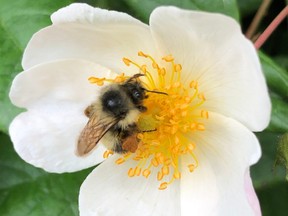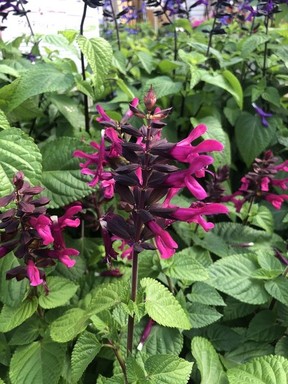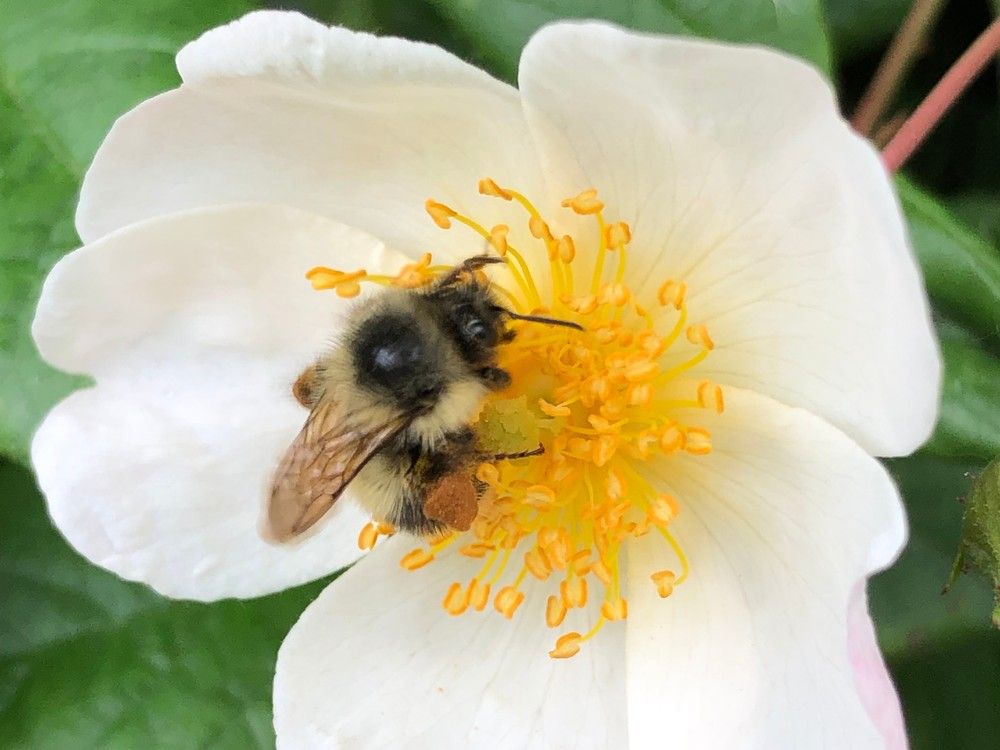[ad_1]
Several new salvias, especially the taller blue varieties, are fabulous for attracting bees

Article content
Among the great joys of summer living are the colours and perfumes of garden beds and containers. But there is another important consideration when it comes to our garden plantings: the attraction of pollinators.
Advertisement 2
Article content
It’s wonderful to see hummingbirds and butterflies visiting our patios and gardens, but we can all do more to make our outdoor spaces even more welcoming.
Article content
Our colour gardens can be beautiful, but by making subtle changes, we can easily make them more “nature friendly”.
Many annuals are attractive to pollinators, but some are especially good at this important job. Cuphea, for example, is a superstar. Over the past few years, many new varieties have been introduced. Proven Winners’ cuphea Vermillionaire, with its long orange tubular flowers, is a hummingbird magnet all summer. Used in hanging baskets, it spills over nicely, and once the flowers develop, they are perfect container companions for full or partial sun locations.
Article content
Advertisement 3
Article content
Smaller orange and red fuchsias, like the Gartenmeister Bonstedt, are super attractors, and a beautiful trailer, Wilma Verslot, is frequented by hummingbirds as well.

Several new salvias, especially the taller blue varieties, are fabulous for attracting bees. The Summer Jewel series grows to about 36 centimetres and is available in pink, red, lavender and white, with lovely spires flowering well into the fall. You’ll see not only bees and hummingbirds drawn to these, but goldfinches as well.
We all enjoy the perfume of heliotrope, a fragrance that also appeals to a wide variety of pollinators. It, too, can be used in either hanging baskets or containers to be enjoyed all season long.
Many new, longer-blooming perennials are stealing the limelight from annuals, perhaps because pollinators seem to have such an affinity for them. Spanish lavender, like the Anouk series, has large, scented blooms that provide great colour and fragrance throughout summer. Blue nepetas, like the new Prelude series, also flower all summer.
Advertisement 4
Article content
New perennial salvias, such as the Marvel collection, make ideal focal points in containers and are super attractors. Newer varieties of Veronicas like Skyward, which comes in pink or blue, are seldom without pollinating visitors. Even some of the more tender salvias, like those in the Mirage series, combine well with both annuals and perennials and are alluring to pollinators.
I love the compact and non-invasive buddleias for many reasons. They are commonly called Butterfly Bushes because they are butterfly magnets, but their vibrant blossoms also lure bees and hummingbirds. These play nicely with other annuals and perennials in both beds and containers and bloom all summer. They also have a delightful perfume that adds so much to any patio.
Advertisement 5
Article content
Another shrubby favorite is caryopteris, or Bluebear. Although late blooming, its stunning flowers carry colour well into fall. A compact new Proven Winners variety called Lil Miss Sunshine has golden foliage that provides great colour all summer until the flowers arrive.
By making some wise choices for your summer patio surround and containers, and by blending perennials and a few shrubs with your annuals, you’ll enjoy summer-long beauty as well as a wealth of birds, butterflies and our precious pollinators.
-

Brian Minter: Appreciating the diversity of perennials
-

Planning for a second zucchini crop this season
Article content
[ad_2]
Source link













Comments
Postmedia is committed to maintaining a lively but civil forum for discussion and encourage all readers to share their views on our articles. Comments may take up to an hour for moderation before appearing on the site. We ask you to keep your comments relevant and respectful. We have enabled email notifications—you will now receive an email if you receive a reply to your comment, there is an update to a comment thread you follow or if a user you follow comments. Visit our Community Guidelines for more information and details on how to adjust your email settings.
Join the Conversation